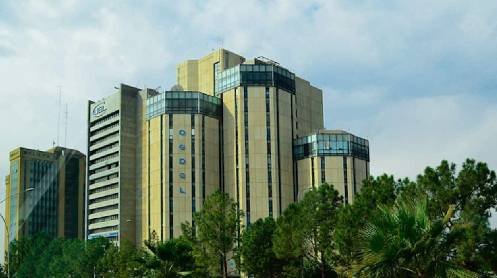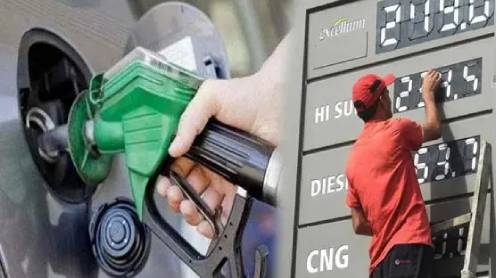Last week was devastating for Venezuela, its people and nearly collapsed oil industry. Oil production since the start of 2020 has fallen catastrophically to multi-decade lows, the extremely fragile economy continues to contract and poorly maintained infrastructure keeps failing. Washington is turning the screws on Maduro’s regime, imposing ever tighter sanctions aimed at isolating Caracas from economically crucial global energy and financial markets. The near implosion of Venezuela’s oil industry is evident from crude oil inventories rising at a savage clip.
According to Bloomberg, for the three weeks from the start of October the pariah Latin American country’s oil inventories surged by 84% to be 10.6 million barrels at the Jose port facility. News agency Reuters stated in an article that those inventories have reached 11.4 million barrels. This sharp increase underscores the considerable impact U.S. sanctions are having on Caracas’ ability to access international energy markets and sell the little oil PDVSA is producing. It is speculated that if domestic oil inventories keep growing at such a rapid clip PDVSA will need to dial back production because of limited storage space. That would essentially end the only source of desperately needed revenue for Caracas. Further reduction in oil output is likely even without PDVSA shuttering operations in response to a lack of storage capacity. During September 2020 Venezuela only pumped on average 383,000 barrels of crude oil daily, or 72% less than the daily average for 2018.
This is having a sharp impact on Venezuela’s economy and responsible for the economic collapse which began in late 2014 when oil prices crashed. The IMF expects Venezuela’s economy to shrink by a disastrous 25% during 2020, after contracting by an incredible 35% in 2019. The deterioration of the Latin American country’s economy could be even worse than projected because of the impact of the COVID-19 pandemic on Venezuela. The lack of information from Maduro’s autocratic regime makes it extremely difficult to judge the true impact of the pandemic.
More worrying is that PDVSA’s vital oil infrastructure and refineries continue to deteriorate. Recent events underscore the parlous state of this all-important infrastructure. Venezuela could be on the brink of its largest oil spill with the floating storage and offloading vessel the Nabarima, in the Gulf of Paria, listing at 45 degrees and having sunk 14.5 meters. If the vessel dumps its load of crude oil it could trigger an environmental disaster far greater than the 1989 Exxon Valdez oil spill in Alaska. That is not the worst of it for PDVSA. The considerable decay of its refining infrastructure has triggered vast gasoline shortages in Venezuela which was once completely energy self-sufficient. Assistance from fellow pariah state Iran, which shipped five tanker loads of gasoline to Venezuela in late May and early June has done little to alleviate gasoline crisis. In fact, it has sparked substantial fallout for Caracas by triggering additional U.S. sanctions against Venezuela and Iran. Those extra sanctions will further impact Caracas’ ability to access energy markets and export economically vital crude oil.
In a devastating blow for PDVSA and ultimately Venezuela’s economy there was a large explosion at the 635,000 barrels a day Amuay refinery which, according to Argus Media, destroyed a 100,000 barrel a day distillation unit. While Maduro claims the explosion was the result of a terrorist attack on the facility, sources quoted by Argus Media point to a water leak that could have caused a vapor blast. Other sources blamed the blast on PDVSA cutting corners to produce gasoline, which if true and coupled with the rundown state of the national oil company’s refineries would explain the catastrophe. According to Argus Media’s sources the entire unit may need to be rebuilt, causing gasoline supplies to fall for a protracted period, worsening Venezuela’s existing fuel crisis.
Diminishing production, falling export income, a shrinking domestic economy and inability to tap international credit markets means that PDVSA is unable to raise the capital required to perform urgently required maintenance on its refineries. As a result, such a disastrous event could occur again in the immediate future. Those developments only point to an ever-worsening outlook for PDVSA and Venezuela’s oil production and economy. This is being exacerbated by U.S. sanctions preventing foreign energy companies from operating in the pariah Latin American country. The last remaining U.S. energy major Chevron, which has been in Venezuela for around 100 years, was ordered by Washington to wind down operations in Venezuela by 1 December 2020. The oil supermajor’s CEO has stated Chevron has no intention of leaving the country and recent comments from the company indicate it is confident the U.S. Treasury will renew its license to operate in Venezuela.
Even so, U.S. sanctions, a sharp lack of capital and skilled labor, dilapidated energy infrastructure and falling drilling activity makes it highly unlikely that Maduro’s regime can reinvigorate the economically vital oil industry. It will take regime change and the lifting of U.S. sanctions for any improvement in Venezuela’s oil industry and hence economy to occur. At this time, regardless of the ever-growing crisis created by Maduro’s regime any change in government appears far away. There are signs that no matter how much Washington ratchets up pressure on Caracas, Maduro will not leave power any time soon. Even crushing international sanctions, economic collapse, open rebellion by pockets of the armed forces and international recognition of Juan Guaidó as the legitimate president have done little to weaken Maduro and his supporters grip on power. For these reasons, there is every possibility that Venezuela’s oil production could fall to zero and crippling shortages of basic goods, such as gasoline, will continue for the foreseeable future. It also means that any recovery for the oil industry and economy is a long way off.





